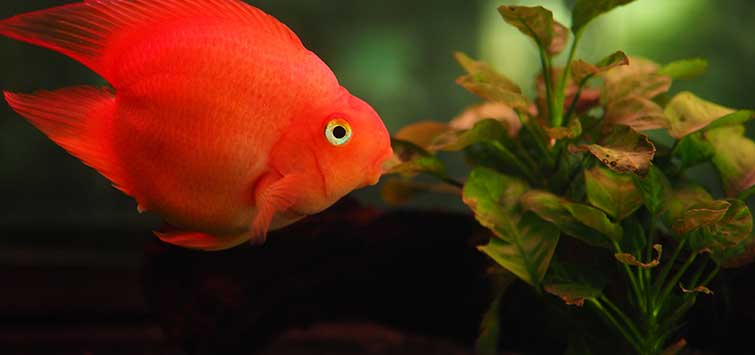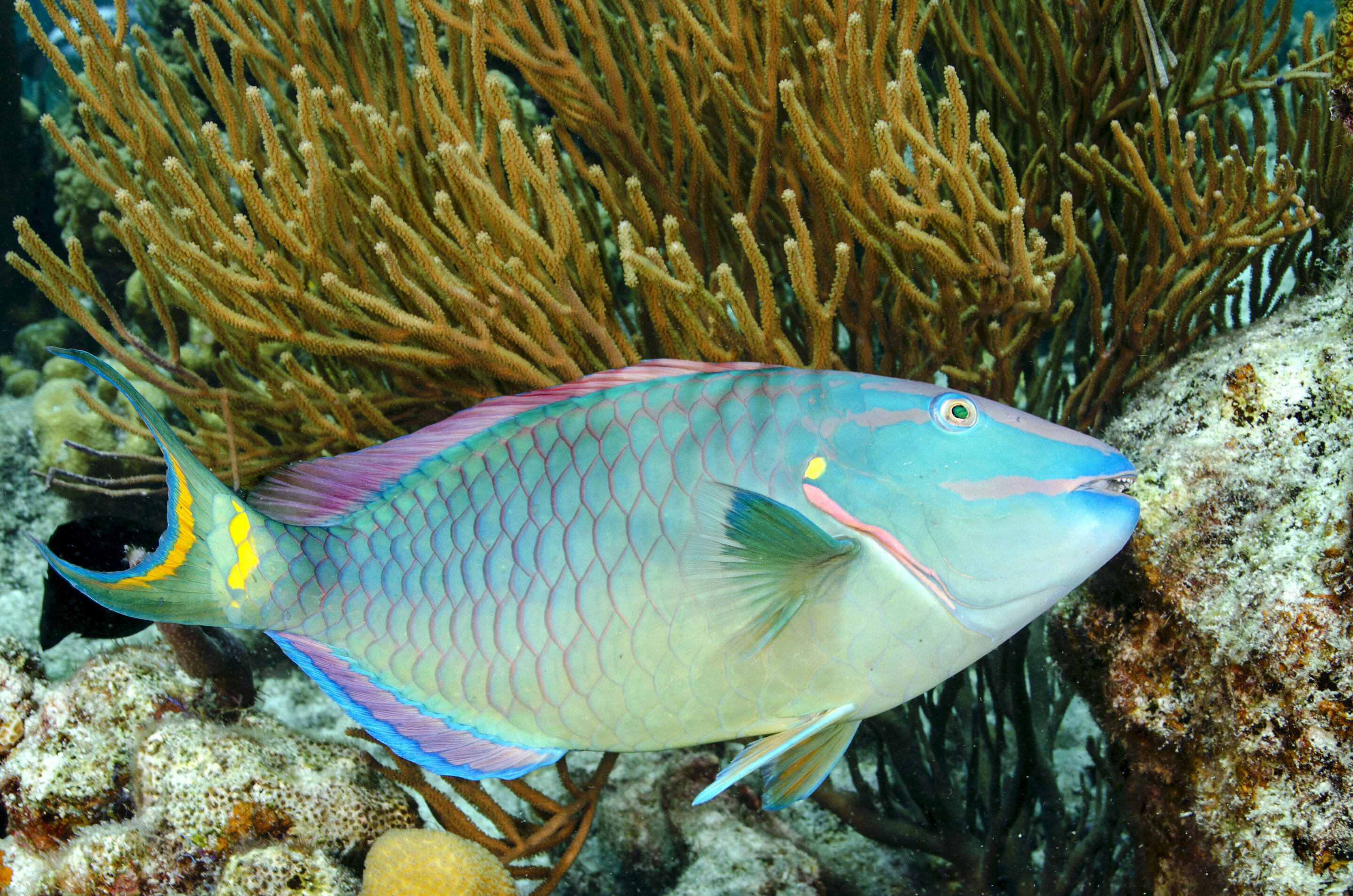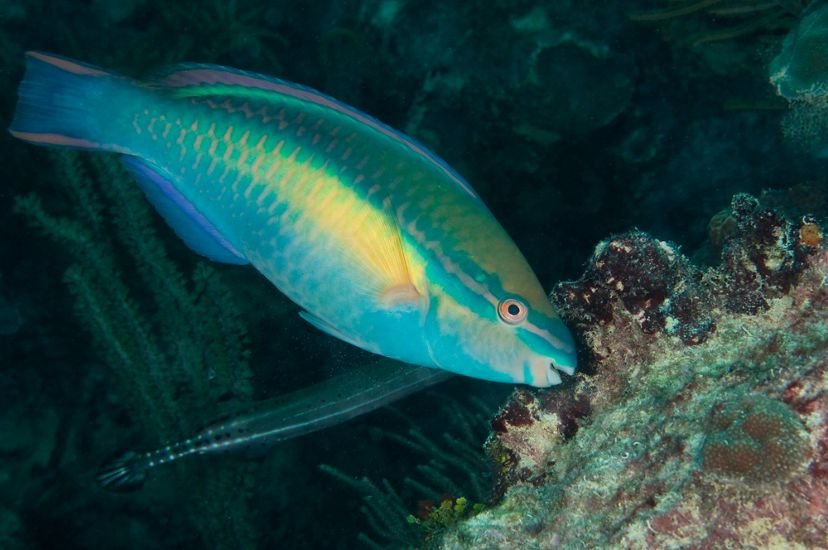Parrotfish often face health issues like ich and bacterial infections. Poor water quality can also lead to stress and disease.
Parrotfish, known for their vibrant colors and important role in marine ecosystems, need proper care to thrive. Regular monitoring of water quality is crucial to prevent common health problems. Ich, a parasitic infection, and various bacterial diseases can afflict parrotfish, often due to stress from inadequate tank conditions.
Ensuring a clean and stable environment helps maintain their health. A balanced diet, regular tank maintenance, and timely medical attention are essential for keeping parrotfish healthy. By understanding their needs and addressing issues promptly, you can help these beautiful fish live long, healthy lives in captivity.
Introduction To Parrotfish Health
Parrotfish are colorful and important members of the marine ecosystem. Keeping them healthy ensures they thrive and contribute to the coral reef’s balance. Understanding their health issues can help in maintaining their well-being.
Importance Of Parrotfish Health
Healthy parrotfish play a crucial role in the ocean. They help in controlling algae growth on coral reefs. This keeps the reefs clean and healthy. Parrotfish also help in sand production through their unique feeding habits. Ensuring their health promotes a balanced marine environment.
Overview Of Common Health Issues
Parrotfish are prone to various health problems. Here are some common issues:
- Parasites: Parrotfish can suffer from parasites like flukes and worms.
- Bacterial Infections: These can cause ulcers and fin rot.
- Fungal Infections: White patches on the skin indicate fungal problems.
- Nutritional Deficiencies: Poor diet leads to weak immune systems.
Recognizing these health issues early can save the fish. Proper care and a clean environment are essential for their well-being.
| Health Issue | Symptoms | Prevention |
|---|---|---|
| Parasites | Scratching, weight loss | Regular water changes, quarantine new fish |
| Bacterial Infections | Ulcers, fin rot | Clean tank, avoid overcrowding |
| Fungal Infections | White patches | Maintain water quality, treat promptly |
| Nutritional Deficiencies | Weakness, poor growth | Balanced diet, varied food sources |

Credit: www.nature.org
Identifying Health Problems
Parrotfish are vibrant and fascinating marine creatures. But they are prone to various health problems. Identifying these problems early can help ensure their well-being. This section covers how to spot physical symptoms and behavioral changes in parrotfish.
Physical Symptoms
Physical symptoms are the most obvious indicators of health issues. Look for changes in their appearance.
- Color Fading: Healthy parrotfish have bright colors. If their colors fade, it could be a sign of stress or illness.
- White Spots: White spots on the body or fins may indicate a parasitic infection.
- Fin Rot: Ragged or decaying fins are signs of bacterial infections.
- Swollen Belly: A swollen belly can point to digestive issues or internal parasites.
Check their eyes and gills too. Cloudy eyes or inflamed gills are also red flags.
Behavioral Changes
Behavioral changes can also signal health problems. Monitor how your parrotfish act daily.
- Lethargy: If your parrotfish is less active, it may be unwell.
- Erratic Swimming: Swimming in circles or upside down can indicate distress or illness.
- Loss of Appetite: If they stop eating, it’s a sign something is wrong.
- Scratching: Rubbing against objects in the tank can indicate parasites.
Pay attention to any sudden changes in behavior. These can be crucial early warning signs of health problems.
Common Diseases
Parrotfish are vibrant and beautiful creatures. But they can suffer from various diseases. Knowing about these common diseases helps in keeping them healthy.
Ichthyophthirius (ich)
Ichthyophthirius, also known as Ich, is a common disease in parrotfish. This disease is caused by a parasite. The parasite attaches to the fish’s skin and gills. Symptoms include white spots on the body, fin clamping, and rapid breathing.
To treat Ich:
- Raise the water temperature to 86°F (30°C) for a few days.
- Use medications like copper sulfate or formalin.
- Quarantine the infected fish to prevent spreading.
Prevention is key. Ensure your tank is clean and maintain water quality.
Bacterial Infections
Bacterial infections are another common issue. These infections can affect the skin, fins, and internal organs. Symptoms include red sores, fin rot, and lethargy.
| Symptom | Description |
|---|---|
| Red Sores | Red, inflamed areas on the body. |
| Fin Rot | Fins appear ragged and decayed. |
| Lethargy | Fish becomes inactive and slow. |
To treat bacterial infections:
- Isolate the infected fish.
- Use antibiotics like tetracycline or erythromycin.
- Maintain a clean tank environment.
Regular water changes and proper diet help prevent bacterial infections.
Preventative Measures
Parrotfish are vibrant and fascinating creatures. Keeping them healthy requires specific care. Preventative measures are crucial to avoid health problems. Proper tank maintenance and a balanced diet play vital roles. Let’s explore these measures in detail.
Proper Tank Maintenance
Maintaining a clean tank is essential for parrotfish health. Follow these steps:
- Regular Water Changes: Change 20% of the water weekly.
- Filtration System: Use a high-quality filter to remove waste.
- Water Parameters: Keep pH between 7.5 and 8.5.
- Temperature Control: Maintain water temperature between 75-80°F.
Regular tank cleaning prevents disease and stress. Use a gravel vacuum to clean the substrate. Remove uneaten food and debris promptly. Monitor water quality using a test kit. Address any imbalances immediately.
Balanced Diet
A balanced diet supports parrotfish health. Provide a mix of foods:
- Pellets: Use high-quality pellets as the primary food source.
- Vegetables: Offer blanched spinach, zucchini, and peas.
- Proteins: Include brine shrimp and bloodworms occasionally.
- Supplements: Add vitamin supplements if needed.
Feed parrotfish small amounts twice daily. Avoid overfeeding to prevent obesity and water pollution. Observe their eating habits and adjust portions accordingly. A varied diet ensures they get essential nutrients.
Water Quality Management
Water quality is crucial for parrotfish health. Poor water can cause stress, disease, and even death. Regular monitoring helps ensure a healthy environment for your fish.
Optimal Water Parameters
Maintaining optimal water parameters is essential. Parrotfish thrive in specific conditions. Here are the ideal parameters:
| Parameter | Ideal Range |
|---|---|
| Temperature | 75-80°F (24-27°C) |
| pH Level | 8.1-8.4 |
| Salinity | 1.020-1.025 |
| Ammonia | 0 ppm |
| Nitrite | 0 ppm |
| Nitrate | < 20 ppm |
Keep these parameters stable to avoid stress and disease. Use a heater and thermometer for temperature control. Use a pH test kit to monitor acidity levels.
Regular Testing
Regular testing is key for maintaining water quality. Test water weekly using a reliable test kit. Focus on:
- Ammonia
- Nitrite
- Nitrate
- pH levels
- Salinity
Record results in a log for easy tracking. If levels are off, take immediate action. Perform partial water changes and adjust filtration as needed.
Quality water ensures happy, healthy parrotfish. Regular care prevents many health problems.

Credit: www.tfhmagazine.com
Quarantine Procedures
Quarantine procedures are essential for maintaining parrotfish health. They help prevent diseases from spreading in your aquarium. Proper quarantine can save your fish from stress and illness.
New Fish Introduction
New fish can bring diseases into your tank. Quarantine them for at least two weeks. Use a separate tank for this process. This tank should have similar water conditions to your main tank.
| Step | Description |
|---|---|
| 1 | Set up a quarantine tank |
| 2 | Match water conditions |
| 3 | Observe new fish daily |
| 4 | Check for signs of illness |
| 5 | Introduce to main tank if healthy |
Sick Fish Isolation
Sick fish need to be isolated immediately. This prevents the spread of disease. Use the same quarantine tank for isolation. Make sure to clean it after each use.
- Move sick fish to the quarantine tank.
- Monitor them closely for symptoms.
- Provide proper medication as needed.
- Keep the quarantine tank clean.
By following these steps, you can ensure your parrotfish stay healthy and happy.
Treatment Options
Parrotfish, like any other aquatic pets, can face health problems. Timely treatment is important. Here are some effective treatment options.
Medications And Supplements
Medications can address specific issues in parrotfish. Some common medications include:
- Antibiotics: Effective against bacterial infections.
- Antifungals: Used for fungal infections.
- Antiparasitics: Treats parasite-related issues.
Supplements can boost their health. These include:
- Vitamins: Essential for immune support.
- Minerals: Important for overall well-being.
- Probiotics: Helps in digestive health.
Administer medications carefully. Follow the vet’s guidelines.
Natural Remedies
Natural remedies can be gentle and effective. Some options are:
- Garlic: Boosts immunity and fights parasites.
- Aloe Vera: Soothes skin and promotes healing.
- Indian Almond Leaves: Improves water quality and reduces stress.
Ensure the natural remedies are suitable for parrotfish. Always monitor their response.
To summarize, combining medications and natural remedies can improve parrotfish health. Always consult a vet for proper guidance.

Credit: phys.org
Long-term Care Strategies
Parrotfish are colorful and lively aquarium pets. Ensuring their long-term health requires consistent care and attention. This section highlights essential strategies to keep your parrotfish healthy and happy.
Monitoring Health Regularly
Regular health checks are crucial for parrotfish. Spotting problems early can prevent serious issues. Observe their swimming patterns, eating habits, and overall behavior.
- Check for signs of disease like spots or unusual growths.
- Ensure their fins are not clamped or damaged.
- Look for changes in color or lethargy.
Keep a health log to track any changes. This can help you spot trends and provide valuable information to your vet.
Stress Reduction Techniques
Reducing stress is vital for the health of parrotfish. Stress can weaken their immune system and make them prone to diseases.
| Technique | Description |
|---|---|
| Proper Tank Size | Ensure the tank is spacious enough for swimming. |
| Water Quality | Maintain clean water with stable temperature and pH levels. |
| Hiding Spots | Provide caves or plants for hiding and resting. |
Minimize loud noises and sudden movements around the tank. These can startle parrotfish and cause stress.
By following these long-term care strategies, you can ensure your parrotfish live a healthy and vibrant life.
Frequently Asked Questions
Is Parrot Fish Healthy To Eat?
Yes, parrot fish is healthy to eat. It is rich in protein, vitamins, and omega-3 fatty acids.
What Is The Problem With Parrotfish?
Parrotfish are overfished, which disrupts coral reef ecosystems. Their grazing helps control algae and promotes coral health. Overfishing can lead to reef degradation and loss of biodiversity. Protecting parrotfish is crucial for maintaining balanced marine environments.
What Is The Disease Of Parrot Fish?
Parrot fish commonly suffer from diseases like ich, marine velvet, and bacterial infections. Maintain clean water conditions to prevent illness.
Is Parrot Fish High In Mercury?
Parrot fish generally have low mercury levels. They are considered safe to eat in moderate amounts. Always check local advisories.
Conclusion
Maintaining the health of parrotfish is crucial for their well-being. Regular monitoring helps detect issues early. Proper diet and clean water are essential. Addressing health problems promptly can prolong their life. Always consult a vet for any concerns. Healthy parrotfish contribute to a vibrant aquarium ecosystem.
Keep your parrotfish happy and healthy.
